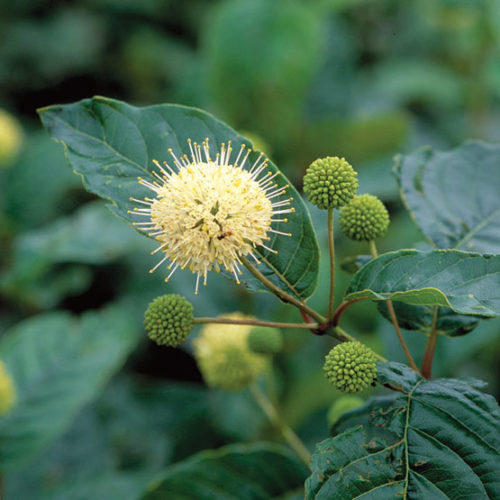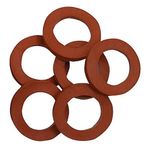
A native small tree found in wetlands from Minnesota to Florida and from New England to California, buttonbush can reach 8 to 15 feet tall and is often wider than it is tall. Prune it into a small multi-trunked tree to reveal the curly bark of its young stems and the punctuated pale spots of its older stems. Blooms are extremely rich in nectar and attract butterflies and other insects.
Noteworthy CharacteristicsMidsummer blooms look like fuzzy white balls arranged in clusters at the end of each twig. Flowers mature to spherical fruit that turns golden brown in autumn, persisting into winter and attracting wildlife. Slow to leaf out in spring, foliage is a rich glossy green, with red veins and red midribs beneath, and bronze, burgundy, or yellow tones in autumn.
CareGrow in fertile, rich, moist, neutral to acidic soil, in full sun. Tolerates clay soil.
PropagationFrom seed, or take semi-ripe cuttings in summer, or hardwood cuttings in winter.
ProblemsInfrequent.
Fine Gardening Recommended Products

Gilmore Rubber Hose Washer 10pk
Fine Gardening receives a commission for items purchased through links on this site, including Amazon Associates and other affiliate advertising programs.
- Clip of 10

DeWalt Variable-Speed Cordless Reciprocating Saw
Fine Gardening receives a commission for items purchased through links on this site, including Amazon Associates and other affiliate advertising programs.
- 18.31 x 6.13 x 4 inches
- 1-1/8-inch stroke length
- Variable speed trigger with 0-3000 spm

Dramm Revolution Adjustable 9-Pattern Metal Hose Nozzle
Fine Gardening receives a commission for items purchased through links on this site, including Amazon Associates and other affiliate advertising programs.
- Ergonomic insulated grip
- Maximum pressure of 90 PSI
- Fully adjustable spray pattern
- No trigger lock
- Genus : Cephalanthus
- Zones : 10, 4, 5, 6, 7, 8, 9
- Plant Height : 10 to 15 feet
- Plant Width : 15 to 30 feet
- Light : Full Sun
- Characteristics : Interesting Bark
- Moisture : Medium to Wet
- Maintenance : Moderate
- Plant Type : Shrubs
- Bloom Time : Summer
- Plant Seasonal Interest : Summer Interest
- Flower Color : White
Plant Characteristics are only available to Fine Gardening members
Sign up for a free trial and get instant access to our complete plant guide as well as our entire collection of articles and videos.



























